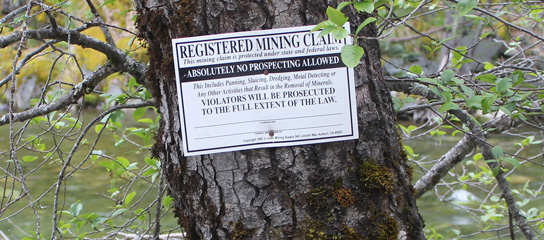Last time I talked about some of the skills necessary to successfully find gold with a metal detector. Minelab makes some wonderfully powerful and well designed gold detectors, but of course no detector can find gold where there isn't gold already present in the ground to begin with. This post is about the art of prospecting - the skill necessary to get your detector’s coil over a nugget. In my personal opinion, it is this skill that makes the difference between successful prospectors and those who are not.
Research
Finding good places to detect can take some work. Sometimes other folks will tell you places they’ve been where they were successful, but if you really want to learn the details of that area you'll need to dig in and do some research. There are often old reports from government geologists, or old mining companies describing the gold they found there. You will want to get copies of these so you can put yourself in a historically productive region, one which has produced good gold in the past.
You want to locate places with a certain set of characteristics that indicate you’ll likely be successful with a metal detector. Most important of these is that you want to find places with coarse alluvial gold near the surface.
Although Minelab detectors can detect gold that is fairly small, gold dust cannot be detected, and the larger the nuggets are, the deeper they can be detected. Some mining districts just don’t produce much in the way of nuggets, and these are less desirable places to search. Often, good detecting areas mean that gold is found in shallow or exposed bedrock. It is also common that old dry washing areas indicate the gold is lying near the surface.
Access
Access can be one of the most difficult problems to solve, because good ground with good gold waiting on it is normally taken and held by someone. Gold is a valuable commodity, so people buy up the best mining properties and that sometimes makes access a problem. Sometimes there are recreational areas set aside by governments for prospectors, and there are some private property owners who don't mind prospectors on their property, but they are the exception. An important part of research is finding areas that you can legally prospect upon. When you find good ground that you're interested in it can be worthwhile to contact the owner and see if you can work out some sort of deal. Another option is clubs and associations who provide access to gold bearing ground to their members.

Reading the field
Once you've selected a good spot out in the goldfields and gained legal access to the place, the question becomes where to start? Some goldfields are vast, covering many square miles, so how do you read and interpret the indications of the old-time miners work, or the geology of the ground to decide the best location to put your coil? Reading the ground is an important skill and will help you decide where the most productive areas are. Next time we'll take a closer look at the natural geologic features and signs a prospector should look for and after that we will dig into interpreting signs of the old-timer’s mining efforts.
Chris Ralph




















Comments
Back in the late 1800's, their reference to fine gold may be on nuggets up to a gram or so, which is definitely easy gold for modern detectors, and just because a small group of miners didn't recover any significant nuggets, doesn't mean there aren't any to be found in nearby ground. A good operator with a metal detector can cover much more surface ground that the old time pick 'n' shovel prospectors could, so many historic low yield areas may still be worth a look today.
Sometimes even reports of areas with veins of hard rock gold only will still yield alluvial nuggets to the prospector armed with a metal detector.
Spotty deposits of nuggets randomly lodged here and there were hard for the old timers to work, but can be worked just fine with a metal detector.